2024
243rd American Astronomical Society Meeting
NRAO at AAS243 in New Orleans
243rd American Astronomical Meeting
New Orleans Convention Center | New Orleans, Louisiana | January 7-11, 2024
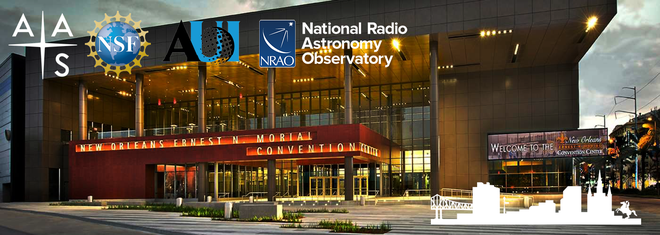
The following sessions and opportunities at the winter January 2024 American Astronomical Society (AAS 243) meeting will bring the best in radio astronomy to New Orleans.
The Block Schedule meeting program for the conference is now available.
| Session | Date | Time | Location |
|---|---|---|---|
| REU Grad Student Event: Opportunities with the NRAO | Sunday, January 7 | 5:30pm to 7:00pm CT | Great Hall B |
| Exhibit Hall Opening Reception | Sunday, January 7 | 7:00pm to 8:30pm CT | Hall B-1/B-2 |
| Special Session: STEM Education | Monday, January 8 | 10:00am to 11:30am CT | 209 |
| Special Session: ALMA as a high-z powerhouse - the impact of the Wideband Sensitivity Upgrade | Monday, January 8 | 10:00am to 11:30am CT | 222 |
| Meet and Discuss NRAO with the User's Committee | Monday, January 8 | 5:30pm to 6:30pm CT | NRAO Exhibit |
| NRAO Town Hall Reception | Monday, January 8 | 6:30pm to 8:30pm CT | R08 / R09 |
| iPoster Session: ngVLA - Space Weather on Other Worlds | Tuesday, January 9 | 9:00am to 10:00am CT | Exhibit Hall |
| Special Session: ngVLA - Space Weather on Other Worlds | Tuesday, January 9 | 10:00am to 11:30am CT | 220 |
| NSF Town Hall | Tuesday, January 9 | 12:45pm to 1:45 pm CT | Great Hall A |
| Special Session: GBO - Science from GBT Large Surveys of the ISM and Star Formation | Tuesday, January 9 | 2:00pm to 3:30pm CT | 210 |
| Meet and Discuss NRAO with the User's Committee | Tuesday, January 9 | 5:30pm to 6:30pm CT | NRAO Exhibit |
| Exhibitor Theater: The Wideband Sensitivity Upgrade |
Wednesday, January 10 |
9:30am to 10:00am CT | Exhibitor Theater |
| AAS Local Student Event |
Wednesday, January 10 |
12:00pm to 2:00pm CT | Exhibit Hall |
| NAASC Polarization Clinic |
Wednesday, January 10 |
5:30pm to 6:30pm CT | NRAO Exhibit |
Visit the NRAO Exhibit during the conference to pick up some giveaways and learn about opportunities and programs like the Wideband Sensitivity Upgrade for ALMA, science with the VLA and VLBA, and ngVLA development.
See the meeting website for conference details.
ALMA Special Session AAS 243
243rd American Astronomical Meeting - New Orleans Convention Center | New Orleans, Louisiana | January 7-11, 2024

ALMA as a high-z powerhouse: the impact of the Wideband Sensitivity Upgrade
The NAASC will host a special session at the upcoming Winter AAS Meeting in New Orleans, held on Monday January 8, 2024, 10am to 11:30am (Central Time). This special session will present high-profile results obtained through ALMA programs in different areas of high-z studies – including large programs, current and expected synergies with high-sensitivity facilities, and the expected yield from ALMA observations after different phases of the Wideband Sensitivity Upgrade (WSU)are achieved. The session will include 4 invited talks by J. Yang (U. Arizona), A. Long (UT Austin), J. Spilker (Texas A&M) and D. Burgarella (LAM Marseille), and a short general presentation of the WSU.
Abstract:
In recent years, the use of ALMA for the characterization of high-z sources (galaxies, AGNs and quasars) has considerably expanded beyond the initial goal to detect molecular emission in Milky Way analogs at z = 3. ALMA will soon acquire a new and transformational role in the field with the implementation of the ongoing Wideband Sensitivity Upgrade (WSU), which will upgrade ALMA’s digital path, correlator, and the first three wideband receivers by the end of this decade, with additional receiver bands to follow. The current impact of ALMA is demonstrated by an increasing number of high-profile publications on sources at z 2~9 on questions as diverse as AGN jets kinematics, lensed dusty galaxy surveys, molecular composition of the cold gas component of SFGs, and the establishment of precise spectroscopic redshifts using atomic and ionized lines of C and O. The recent installation of the new ALMA Band 1 (35-50 GHz) also opened the ability to search for redshifted low-J CO lines, which are a good diagnostic for estimating the mass of the molecular gas reservoir. Considering the significant discovery space in this domain to be opened by current and future facilities – JWST and Roman in particular - ALMA will leverage the expected trove of high-z detections by providing for a significant number of these sources the baseline physical context to understand AGN accretion and galaxy evolution across cosmic times. The WSU, in addition to allowing much more efficient spectral scanning for redshift surveys, will provide dramatically improved sensitivity across the board (line sensitivity by a factor ~1.5, continuum sensitivity by a factor ~1.6-2) directly translating into deeper and more efficient detections.
Schedule: https://submissions.mirasmart.com/AAS243/Itinerary/EventDetail.aspx?evt=62
Presentations titles and abstracts
J. Spilker: Cleaning up the high-redshift dusty universe with JWST and Wideband ALMA PDF presentation
The first generation of massive galaxies assembled very rapidly, with star formation rates hundreds or thousands of times higher than the Milky Way. This star formation was almost entirely obscured by dust, making such galaxies nearly invisible even in deep Hubble imaging but bright at the submillimeter wavelengths accessible by ALMA. JWST's rest-optical wavelength coverage and exquisite sensitivity, paired with the wide bandwidth of a suite of upgraded ALMA receivers, offer qualitatively new views into the formation and evolution of the most dust-obscured galaxies at high redshift. I will present some early results that pair JWST with current-generation ALMA data to resolve the structure, feeding, and feedback in and around a few well-studied lensed dusty galaxies.
A. Long: ALMA & Massive Galaxy Evolution in the First 2 Billion Years
One of the most puzzling discoveries of the decade is that substantial populations of massive galaxies ceased forming stars as early as two billion years after the Big Bang (i.e. by z = 3). These are likely some of the first galaxies in the Universe, yet we still do not understand how they form and evolve so rapidly. In order to piece the evolutionary puzzle together, we must capture large samples of massive galaxies at all phases of their evolution, from gas-rich star formers to fully quiescent systems -- all at z > 3. Due to the rarity and diversity of the massive galaxy population at z > 3, such an endeavor requires a combination of wide-field observations from the UV to millimeter. I will present new results on z > 3 DSFGs identified in the Ex-MORA survey -- the largest ever ALMA blank-field survey -- which is specifically designed to capture massive z > 3 galaxies too dust obscured to be detected in most pre-JWST UV/optical surveys. I will also highlight current efforts that combine incoming JWST and ALMA observations to discover and characterize z > 3 massive post-starburst and quiescent galaxies in the same field. Finally, I will explain how all of these efforts will be immensely improved by the ALMA Wideband Sensitivity Upgrade.
J. Yang: Probing co-evolution between the earliest supermassive black holes and host galaxies using JWST and ALMA PDF presentation
High-redshift quasars are unique probes for investigating the growth of the earliest supermassive black holes (SMBHs), the assembly of their massive host galaxies, and the co-evolution between the two. However, it has been challenging to place tight constraints on the connection between central SMBHs and host galaxies in high-redshift quasars, due to limitations in observations. Now, the combination of JWST and ALMA is opening up a new era. I will present some new results from observations of luminous quasars at z>6.5 using JWST and ALMA. Based on several JWST and ALMA programs, we have constructed a sample of ~ 30 luminous quasars at z~6.5-7.6, covered by both JWST and ALMA observations. Particularly, half of them have both high spatial resolution (~0.1 arcsec) JWST and ALMA observations. These quasars have JWST spectroscopic observations of the rest-frame optical emission, which enables us to obtain reliable measurements of their virial BH mass and to characterize quasar physics. We are also able to carry out a first search for AGN feedback via [OIII] in high-redshift quasars. With JWST images, we can for the first time separate the stellar light of host galaxies from the bright central point sources, to uncover the diverse quasar hosts in the early Universe. The first results have revealed extended emission from the host galaxies, galactic-scale outflows, and close companion galaxies. The ALMA observations provide deep insights into the morphology and gas kinematics of these quasar host galaxies in the rest-frame far-infrared in great detail. The high-resolution [CII] observations at 0.1 arcsec reveal complex quasar host galaxies and quasar-companion systems. The combined JWST-ALMA dataset offers a comprehensive suite of dust, gas, and stellar light observations for these most distant quasar-hosts, providing complete measurements of BH mass, dynamical mass, and stellar mass.
Denis Burgarella: ALMA's perspective on the Universe at the Epoch of Reionization
ALMA provides astronomers with the most sensitive and best angular resolution in the sub-millimeter and millimeter ranges. These characteristics are necessary to study the Universe at high, and ultra-high redshifts. The information collected by ALMA on these objects is fundamental because it allows to study the interstellar medium in the very first phases of galaxy evolution. More specifically, ALMA brings a unique information on the dust emission. For galaxies at z > 4-6, this is the only way to probe the formation of the first dust grains in the Universe. Through the far-IR fine-structure lines, ALMA also permits to constrain the gas characteristics in the HII regions (mainly [OIII] line) and in the photodissociation regions (mainly [CII] line). Beyond this physical information, ALMA observations are necessary to better estimate photometric redshifts through SED fitting, and to estimate spectroscopic redshifts via the emission lines. However, the present ALMA is still limited and we can hardly study large galaxy samples in the early Universe.
With the implementation of the ongoing Wideband Sensitivity Upgrade (WSU), ALMA’s efficiency to estimate redshifts will be improved. The better sensitivity (line sensitivity by a factor ~1.5, continuum sensitivity by a factor ~1.6-2) and mapping speed (2x - 5x) are also necessary to reach out the most distant objects. We expect a strong impact on the scientific outcome that is very necessary with the advent of JWST that opened up the z > 9 Universe to physical analysis, and with the future facilities (ELT, Roman Space Telescope, SKA).
2024 NRAO Postdoctoral Symposium
2024 NRAO/GBO Postdoctoral Symposium
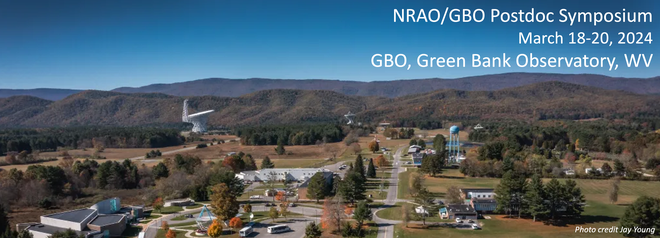
The 19th Postdoctoral Science Symposium will be held on March 18 - 20, 2024 at the Green Bank Observatory, West Virginia, in a hybrid (virtual and in person) format. The annual symposium brings together the resident and non-resident Jansky fellows along with NRAO & Green Bank Observatory (GBO) postdocs in order to highlight their current research, share ideas, and establish collaborations. Local NRAO scientific and engineering staff are encouraged to attend.
We are pleased to have Luis Henry Quiroga-Nunez (Florida Tech) as Keynote Speaker this year.
Panelists participating in our hybrid career panel session are:
- Maura McLaughlin (WVU)
- Luis Henry Quiroga-Nunez (Florida Tech)
- Tom Rice (AAS)
- Justin Ellis (Bionic Health)
Symposium
Date: March 18 - 20, 2024
Location: Jansky Auditorium
Green Bank Observatory, WV
Program
Abstracts for the talks are listed here.
Talks are allocated for 20 minute each, with 15-18 min for the presentation.
All times are listed local to Green Bank, WV in the Eastern Time Zone (EST).
Monday - March 18, 2024
|
||
| 10:15--10:30 |
Welcome and Introduction |
Anna Kapinska, |
| 10:30--11:00 |
Coffee break |
|
|
Session 1: Extragalactic ISM | ||
|---|---|---|
| 11:00--11:20 |
High Redshift HI & H2 With CHILES |
Julia Blue Bird |
| 11:20--11:40 |
PHANGS-MeerKAT and MHONGOOSE HI observations of nearby spiral galaxies: physical drivers of the molecular gas fraction, Rmol |
Cosima Eibensteiner |
| 11:40--12:00 |
Discussion: Session 1 |
|
| 12:00--13:30 |
Lunch |
|
|
Session 2: ISM and Star Formation | ||
| 13:30--13:50 |
Structure and evolution of the interstellar medium |
Michael Rugel |
| 13:50--14:10 |
Complex Chemistry at the Earliest Stage of Low-mass Star Formation |
Samantha Scibelli |
| 14:10--14:30 |
Interferometric Observations of Spectral-line Polarization toward Low-mass Dense Cores |
Tao-Chung Ching |
| 14:30--15:00 |
Discussion: Session 2 |
|
| 15:00--15:30 |
Coffee Break |
|
|
Session 3: Tools and Receivers | ||
| 15:30--15:50 |
Tools for recovering full Stokes movies for the EHT |
Hendrik Müller |
| 15:50--16:10 |
Multiband architecture for the next generation of radio-astronomy receivers |
David Monasterio |
| 16:10--16:30 |
Developing a Cyclic Spectroscopy Backend for the Green Bank Telescope |
Ross Jennings |
| 16:30--17:00 |
Discussion: Session 3 |
|
|
17:00 |
Dinner for Postdocs and Organizers |
|
All times are listed local to Green Bank, WV in the Eastern Time Zone (EST).
Tuesday - March 19, 2023
|
||
| 09:15--09:30 |
Welcome & Announcements |
LOC |
|
Keynote Talk | ||
|---|---|---|
| 09:30--10:45 |
Characterizing disk stellar populations in Milky Way: A challenge for astrometric measurements |
Luis Henry Quiroga-Nunez (Florida Tech) |
| 10:45--11:00 |
Coffee Break |
|
|
Session 4: Pulsars | ||
| 11:00--11:20 |
Exploring the Influence of Polarization Calibration Techniques on Pulsar Timing with NANOGrav GBT Data |
Lankeswar Dey |
| 11:20--11:40 |
What Pulsar Timing Arrays Can Teach Us About Gravity |
Alex Saffer |
| 11:40--12:00 |
Cyclic Spectroscopy-Aided Studies of the ISM in PTA Observing Setups |
Jacob Turner |
| 12:00--12:30 |
Discussion: Session 4 |
|
| 12:30--13:30 |
Lunch |
|
|
Career Panel | ||
| 13:30--14:15 |
Career Panel (1) |
|
| 14:15--14:30 |
Group Photo and Coffee Break |
|
| 14:30--15:15 |
Career Panel (2) |
|
| 15:15--15:30 |
Coffee Break |
|
|
Session 5: Radio Transients and History in Radio Astronomy | ||
| 15:30--15:50 |
Demographics of the ~GHz transient sky |
Dillon Dong |
| 15:50--16:10 |
Celebrating Successes: Women in Radio Astronomy |
Rebecca Charbonneau |
| 16:10--16:30 |
Discussion: Session 5 |
|
| -- |
Closing Remarks |
|
| 17:00 |
Symposium Dinner |
|
Wednesday - March 20, 2023
|
||
| 10:00 |
Telescope tour |
|
| --- |
|
|
| 15:30 |
|
|
Logistics
Important Dates
In-person Registration Deadline: March 13th, 2024
Symposium Venue
The Jansky Auditorium on the Green Bank Observatory Campus
The Observatory address is 155 Observatory Rd, Green Bank, WV 24944
* Please be aware that there is no cell phone reception within Green Bank or within a 1 hour drive of Green Bank.
Driving Directions:
Find us on: Google Maps, Bing Maps, what3words
If you are coming from:
The North, take I-79 S to RT 33 East to RT 92 S
The South, take I-77 N to I-64 E to RT 92 N
The East, take
- I-64 W to RT 92 N – OR
- RT 33 W to RT 28 S/W to RT 92 S
The West, take:
- RT 50 E to I-79 S to RT 33 E to RT 92 S – OR
- I-64 E to I-79 N to RT 33 E to RT 92 S – OR
- I-64/I-77 E to I-64 E to RT 92 N
More information here.
Lodging
For participants who have not booked and paid for their own lodging, lodging will be sponsored by NRAO via the Green Bank Housing onsite.
Computing Access
Green Bank Observatory is located in the heart of the National Radio Quiet Zone. There is no cell service or wifi here! Internet connection is available via ethernet cable connect. Make sure to bring adapters if your laptop does not have an ethernet port. WiFi of any kind is not permitted on site. We also ask that you turn off the WiFi capability of any wireless devices while in Green Bank.
Meal Arrangements
Onsite meals provide.
Breakfast is served in the cafeteria at 8am. Dinners will be served at 5pm.
On Sunday night (March 17th) food and drink will be available for Postdocs and registered participants only starting at 7pm.
GBO Site Tour: Logistics and RFI concerns
On Wednesday, March 20th, a GBO site tour has been organized for the postdocs and career panelists. More information TBD.
Closed-toed shoes and long pants are required during the tour.
- Digital cameras are not permitted near the telescopes
- Please take RFI precautions and protocols as instructed by the organizers
- If you have any question, please ask one of your local guides.
Green Bank Tourist Attractions
TBD
Organizing Committee
- Samantha Scibelli (Jansky Fellow, Co-chair, NRAO-CV)
- Cosima Eibensteiner (Jansky Fellow, Co-chair, NRAO-CV)
- Jacob Turner (Green Bank Postdoctoral Fellow, Co-chair, GBO)
- Anna Kapinska (Jansky Coordinator, NRAO-NM)
- Jessica Burns (Administrative Support, NRAO-CV)
Group Photos

Observation Deck Photo in front of GBT! (from left to right: Luis Henry Quiroga-Nunez, Julia Blue Bird, Jacob Turner, Tom Rice, Rebecca Charbonneau, Dillon Dong, Alex Saffer, Cosima Eibensteiner, Samantha Scibelli, Lankeswar Dey, Ross Jennings, Tao-Chung Ching, Hendrik Müller, Michael Rugel, Anna Kapinska)
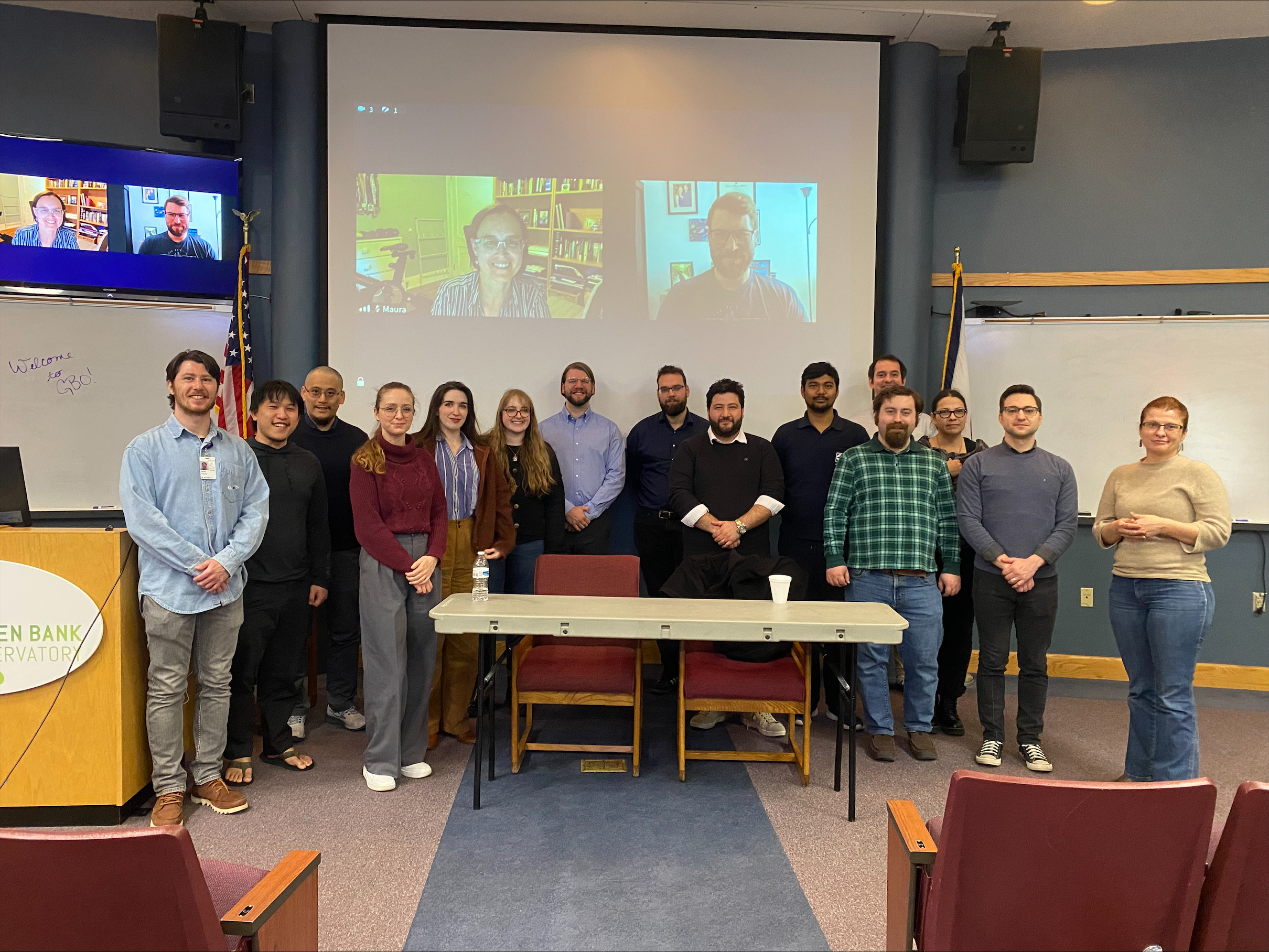
Group Photo with Career Panel! (from left to right: Jacob Turner, Dillon Dong, Tao-Chung Ching, Cosima Eibensteiner, Rebecca Charbonneau, Samantha Scibelli, Tom Rice, Hendrik Müller, Luis Henry Quiroga-Nunez, Lankeswar Dey, Michael Rugel, Ross Jennings, Julia Blue Bird, Alex Saffer, Anna Kapinska; virtual participation from Maura McLaughlin and Justin Ellis)

Career Panel in Action! (from left to right: Tom Rice and Luis Henry Quiroga-Nunez; top Zoom panel: Maura McLaughlin and Justin Ellis)
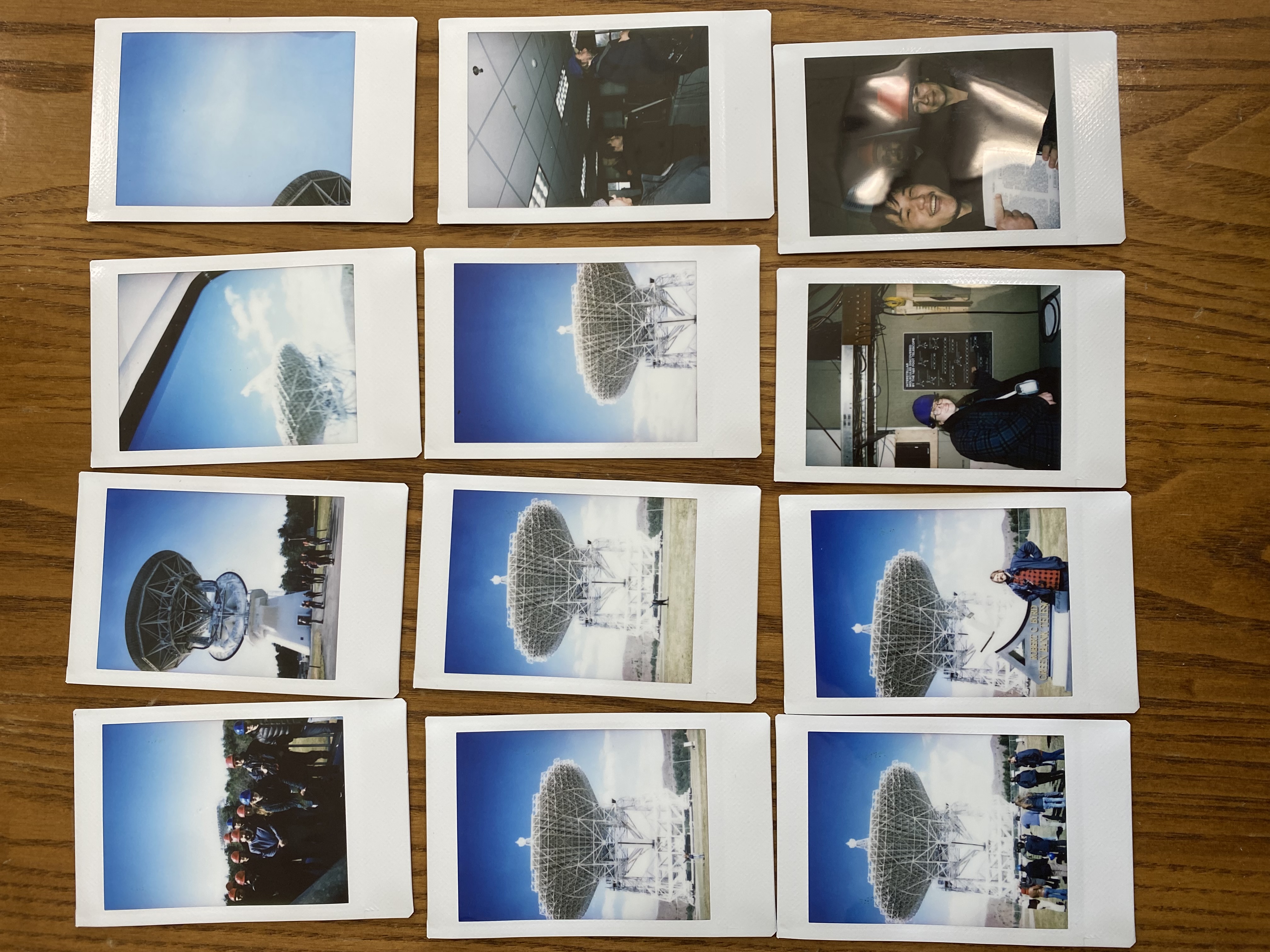
Collage of Polaroid photos from our site tour!
2024 Future of Science Symposium
2024 Caribbean Future of Science Symposium




This symposium will bring together, from the Caribbean, and the international community, leading physicists, computer scientists, astronomers, technologists, entrepreneurs, policy makers, conservationists, and leaders to engage in events, conversations and collaborations to imagine the future of science and technology in the Caribbean. We are curating a symposium that synergizes conversations, collaboration and networking, to create new bridges and opportunities between Caribbean scientists, students, and the larger scientific community.
This collaborative event, proudly hosted by the University of the West Indies, St. Augustine, Trinidad, and Sound+Science Inc., has received generous funding from the Simons Foundation.
- Stephon Alexander, Brown University
- Abuenameh Aiyejina, UWI
- Roger Andrews, UWI
- Rose-Marie Antoine
- Roger Andrews, University of the West Indies
- Robert Branderberger, McGill University
- Angelique Brunner, EB5 Capital
- Cyril Creque-Sarbinowski, Flatiron Research Fellow, CCA
- Brian Copeland
- Renee Cummings, University of Virginia
- Tatsuya Daniel
- Wanda Diaz-Merced, San Diego^2 STEM
- Everad Findley
- Shirin Haque, University of the West Indies
- Christopher Harrison, Newcastle University
- Patrick Hosein
- Leah Jenks, KICP Fellow, University of Chicago
- Clifford Johnson, UCSB
- Brian R. Kent, National Radio Astronomy Observatory
- Michael Kosterlitz, Brown University and Nobel Laureate in Physics
- Leonard Levallee
- Amanda Lind
- Joao Magueijo, Imperial College London
- Claude McNamarah, University of the Bahamas
- Isa Mohammed, UWI
- Veeshan Narinesingh
- Phillip Phillips
- Maria Popova
- Mark Richards
- Robert Rowe, NYU
- Martine Rothblatt
- Farrah Simpson, Brown University
- Tarun Souradeep, Director, Raman Research Institute
- Kendrick Smith, Perimeter Institute
- Lee Smolin, Perimeter Institute
- Tennecia Stephenson, UWI
- Michael Peskin, SLAC
- Nicolas Yunes, University of Illinois
2024 AAAS Denver
American Association for the Advancement of Science - Denver 2024

The exploration of the Solar System and our near-Earth environment with radar helps to understand the current state and the evolution of Earth's nearest celestial neighbors. Radar plays an important role in planetary science and planetary defense by characterizing these bodies and evaluating their impact risk to Earth. Advances in astronomical radar are opening new avenues, renewed investment, and interest in joint industry and scientific community collaborations as a multidisciplinary venture. The National Academies’ Planetary Science and Astrobiology Decadal Survey report sent a strong message from the community to NASA and the National Science Foundation to support ground-based astronomical radar capabilities. There is currently only one system in the world, the Goldstone Solar System Radar, concentrating on these efforts. A new instrument concept called the next generation RADAR (ngRADAR) system will use the Robert C. Byrd Green Bank Telescope and other current and future facilities to expand on these capabilities. This scientific session will showcase recent results obtained with ground-based radar systems and discuss how radar has the potential to substantially advance knowledge of the solar system, inform future robotic and manned spaceflight, and identify Earth-impact hazards.
https://aaas.confex.com/aaas/2024/meetingapp.cgi/Session/31587
-
Tony Beasley, National Radio Astronomy Observatory, Charlottesville, VA -
Brian R. Kent, National Radio Astronomy Observatory, Charlottesville, VA
Organizer
Co-Organizer and Moderator
-
Edgard Rivera-Valentín, Johns Hopkins University Applied Physics Laboratory, Laurel, MD - Marina Brozovic, Jet Propulsion Laboratory, California Institute of Technology, Pasadena, CA
- Patrick A. Taylor, Central Development Laboratory, National Radio Astronomy Observatory, Charlottesville, VA
Speakers
244th American Astronomical Society Meeting
NRAO at AAS244 in Madison, Wisconsin
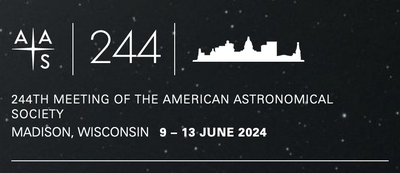
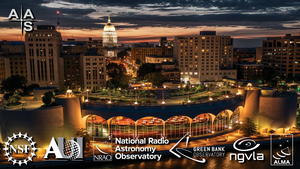
The following sessions and opportunities at the winter June 2024 American Astronomical Society (AAS 243) meeting will showcase the National Radio Astronomy Observatory and Green Bank Observatory in Madison, Wisconsin.
The Block Schedule meeting program for the conference is now available.
NRAO and e-Learning will be shown at the meeting on Tuesday, June 11th at 10am.
CARTA will be shared with the membership at 9:30am on Tuesday, June 11th.
The NRAO and Green Bank Observatory tables will be in the exhibit hall for the duration of the conference. Please visit The Observatories to learn about observing opportunities, science, student programs, and ways to be involved.
Follow the NRAO (FB, X, LinkedIn, Instagram) and GBO (FB, X, LinkedIn, Instagram) to learn about the latest events happening at the conference.
| Session | Date | Time | Location |
|
NRAO and GBO Exhibit - Opening Reception |
Sunday, June 9th |
7:00pm |
Exhibit Hall |
|
Circumstellar Disk Lifetimes |
Monday, June 10th |
10:15am |
Press Room F |
|
Tuesday, June 11th |
9:30am |
Exb Theater |
|
|
SuperKnova: Broadening Participation in STEM through E-Learning |
Tuesday, June 11th |
10:00am |
Ballroom A |
|
Dust-free Clouds in the Galactic Disk with Toney Minter, GBO |
Tuesday, June 11th |
10:15am |
Press Room F |
|
Twin Jets and Disks: JWST MIRI and ALMA Discoveries |
Wednesday, June 12th |
10:15am |
Press Room F |
|
NRAO and GBO Exhibit - Closing Reception |
Thursday, June 13th |
8:30am |
Exhibit Hall |
IAU General Assembly XXXII 2024
IAU General Assembly XXXII 2024 in Cape Town, South Africa
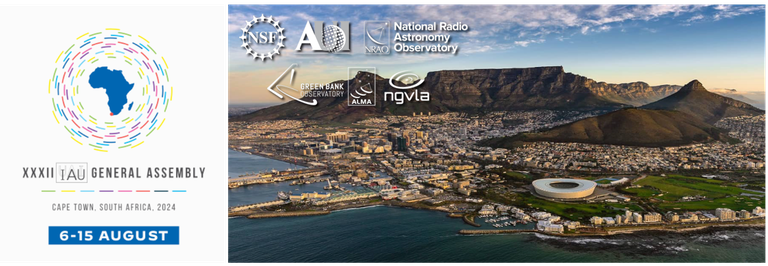
The National Radio Astronomy Observatory and Green Bank Observatory will showcase the best in radio astronomy and science at the IAU General Assembly XXXII in Cape Town, South Africa, August 6-15, 2024.
NRAO/GBO/AUI and users from the community will participate in the following Division events, symposia, working groups, and focus meetings:
- A Coherent View of Atomic and Molecular Gas from Infrared to Radio Wavelengths, Focus Meeting 2.
- The Future of Radio Astronomy in an Increasingly Crowded Spectrum, Focus Meeting 5.
- IAU 389: Gravitational Wave Astrophysics
- Division B: Facilities, Technologies, and Data Science
- Division C: Education, Outreach, and Heritage
- Division H: Interstellar Matter and the Local Universe
- Division J: Galaxies and Cosmology
- IAU 392: Neutral Hydrogen in and Around Galaxies
- Global Coordination of Ground and Space Astrophysics, Working Group 1
- Astronomy for Equity and Inclusion, Working Group 4
- Women in Astronomy, Working Group 3
- New Horizons at the Interface between Computational Astrophysics and Big Data
- Multi-Wavelength Astronomy, Focus Meeting 11
- Dark and Quiet Sky Protection, Working Group 6
The NRAO and Green Bank Observatory will be in the front of the exhibit hall for the entire conference. Please visit to learn about science, research, student opportunities, the next generation VLA (ngVLA), and the ALMA Wideband Sensitivity Upgrade (WSU).
Follow the NRAO (FB, X, LinkedIn, Instagram) and GBO (FB, X, LinkedIn, Instagram) to learn about the latest events happening at the conference.
Presentation Schedule
| Name | Date | Time | Session | Title |
| Devaky Kunneriath | Aug 6 | 10:00 | FM2 | Star formation and molecular gas observations of NGC 5331 with VLA and ALMA |
| Will Armentrout | Aug 6 | 10:00 | FM2 | Star formation efficiency on the outer edge of the Milky Way |
| Cosima Eibensteiner | Aug 6 | 14:47 | FM2 | PHANGS-MeerKAT and MHONGOOSE HI observations of nearby spiral galaxies: physical drivers of the molecular gas fraction |
|
Anica Miller-Rushing, et al. |
Aug 6 | 10:00 | OAO-1/WG-1 & 5 | Astro ACCEL |
| David Rebolledo | Aug 7 | 10:00 | FM2 | A resolved view of the impact of massive star formation in the atomic, molecular and ionized gas in the Carina Nebula |
| Loreto Barcos-Muñoz | Aug 7 | 11:34 | FM2 | Star Formation and Feedback in Local Luminous and Ultra Luminous Infrared Galaxies |
| Pedro Salas | Aug 7 | 15:00 | FM2 | Characterizing the atomic-to-molecular transition with carbon radio recombination lines |
| Kimberly Emig | Aug 7 | 16:47 | FM2 | Cold 'dark' gas in Cygnus X: The first large-scale mapping of low-frequency carbon recombination lines |
| Kimberly Emig | Aug 7 | 13:50 | FM5 | Invited Review Talk: New and Future Discoveries Observing Molecular and Radio Recombination Lines |
| Tony Beasley | Aug 7 | 15:30 | FM5 | Developments in NRAO-SpaceX Operational Data Sharing (ODS): Exploring Spectrum Coexistence with Satellite Operators |
| Tiffany Stone Wolbrecht | Aug 7 |
10:00 |
Astro Education |
ACEAP - The Chile Expedition for Astronomy Educators and Outreach Professionals |
| Giorgio Siringo & Sean Dougherty | Aug 7 |
13:30 |
CPS-2 | Spectrum Management at ALMA |
| Srikrishna Sekhar | Aug 8 | 11:08 | FM5 & FM7 |
GRIDFlag : RFI flagging in the UV domain (FM5 Talk) |
| Yasmin Catricheo | Aug 8 | 13:30 | OAD-2 |
Empowering Astronomy for Development |
| Scott Ransom | Aug 8 | 16:15 | IAU 389 |
The Future of NANOGrav and the DSA-2000 |
| Yasmin Catricheo | Aug 9 | 13:30 | Div C | Cosmovisions of the Pacific |
| L. Viktor Toth | Aug 9 | 13:30 | Div H |
The ngVLA as a Gamechanger |
| Brian Kent | Aug 9 | 15:00 | Div B | 3D Astronomical Visualization with Open Shading Language |
| Tiffany Stone Wolbrecht | Aug 9 | 15:00 | Div C | ASTRO ACCEL for Advancing Astronomy Education |
| Mark Lacy | Aug 12 | 10:00 | Div J 2.1 | The VLA Sky Survey |
| Samantha Scibelli | Aug 12 | 10:00 | Div H | Complex Chemistry at the Earliest Stage of Low-mass Star Formation |
| Phil Jewell | Aug 12 | 10:00 | Div B | The Future of ALMA: Wideband Sensitivity Upgrade and Next-Generation Concepts |
| Tony Beasley & Phil Diamond | Aug 12 | 16:30 | Div B | Synergies between ngVLA and SKA-Mid |
| Yasmin Catricheo | Aug 13 | 9:10 |
C5 |
Mapuche Cosmovision of the Universe |
| Tony Beasley | Aug 13 | 13:30 | WG 1-2 | ngVLA Project - Future Radio Telescopes |
| Rachel Freed & Tiffany Stone Wolbrecht | Aug 13 | 10:00 & 15:00 | FM10 |
Remote telescope-based curricula for undergraduate introductory astronomy |
|
Anica Miller-Rushing et al. |
Aug 13 | 13:30 | Early Career WG |
Early Career Researchers within astronomy education |
|
Yasmin Catricheo |
Aug 13 | 15:30 | WG3 |
Women and Girls in Astronomy Program (WGAP) |
| Sonia Duffau | Aug 14 | 10:30 | WG 3-2 | PROVOCA Mentorship Program |
| Yasmin Catricheo | Aug 15 | 10:00 15:00 |
WG4 | Astronomy Accessible Software for All (AASA) |
|
Tiffany Stone Wolbrecht |
Aug 15 |
10:00 |
WG4 | Enhancing Astronomy Engagement and Accessibility |
| Julia Blue Bird | Aug 15 | 11:38 | IAU 392 | High Redshift HI & H2 With CHILES |
| Giorgio Siringo & Sean Dougherty | Aug 15 | 13:30 | WG6 | Radio Frequency Interference at the ALMA Observatory |
| Lucas Hunt | Aug 15 | 13:30 | FM11 | The VLBA New Digital Architecture: A New Digital Backend for the VLBA |
| Megan Johnson | Aug 15 | 13:30 | FM11 | ngVLA for VLBI in the 2030's and Beyond |
| Danielle Rowland | Aug 15 | 14:50 | WG4 | Diversifying STEM: Collaborative Initiatives at NRAO |
International Microwave Symposium 2024
International Microwave Symposium 2024 in Washington, D.C.
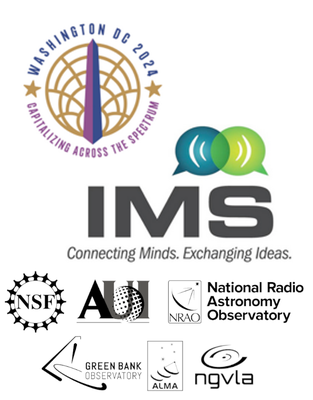
The National Radio Astronomy Observatory and Central Development Laboratory will showcase their latest developments in radio instrumentation technology at the IEEE International Microwave Symposium in Washington, D.C., June 17-21, 2024.
The NRAO/GBO and ngVLA table (#256) will be in the exhibit hall for the duration of the conference in Washington, D.C. Visit The Observatories to learn about the latest developments in R&D instrumentation.
The Technical Program for the conference is now available.
Follow the NRAO (FB, X, LinkedIn, Instagram) to learn about the latest events happening at the conference.

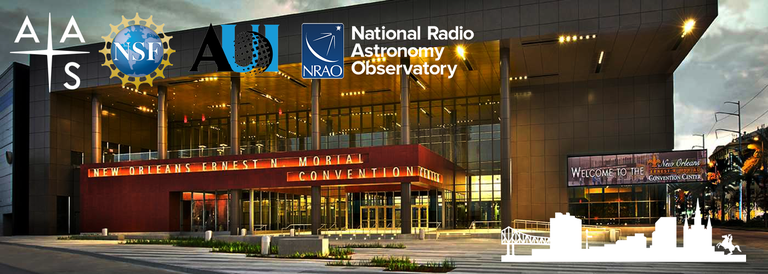


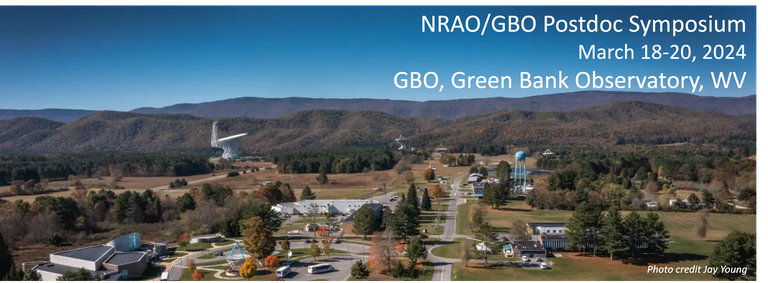
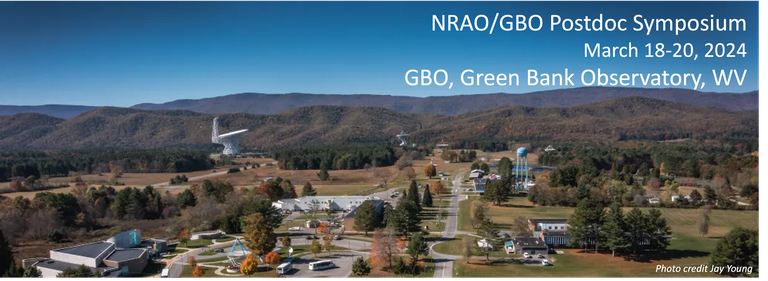

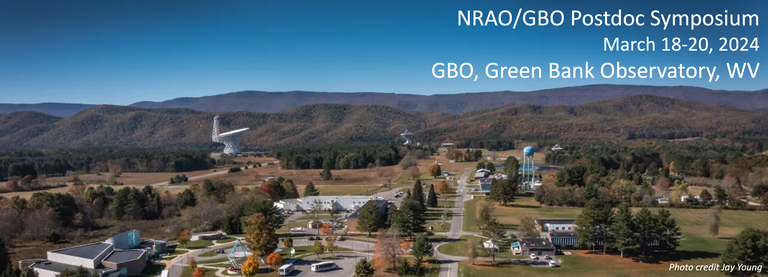
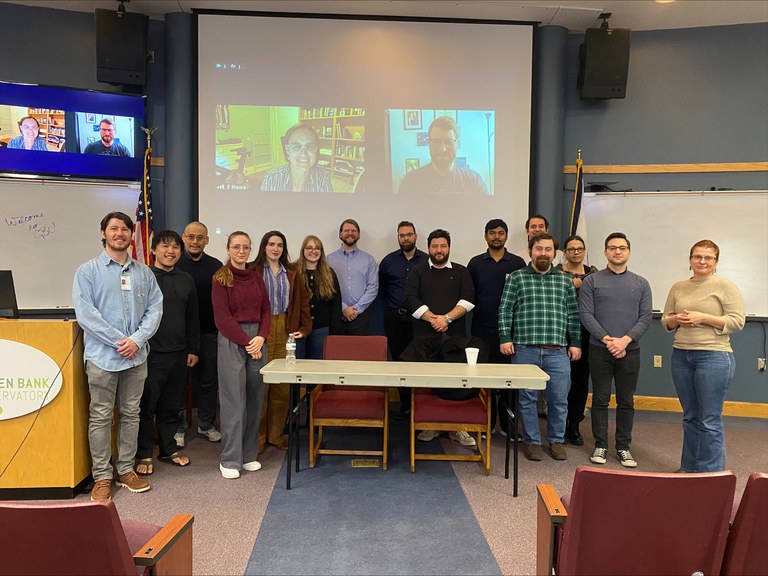
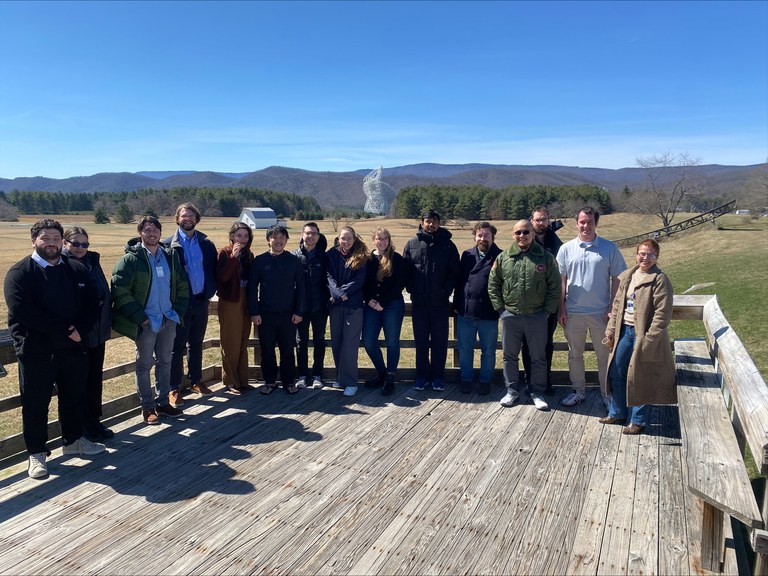


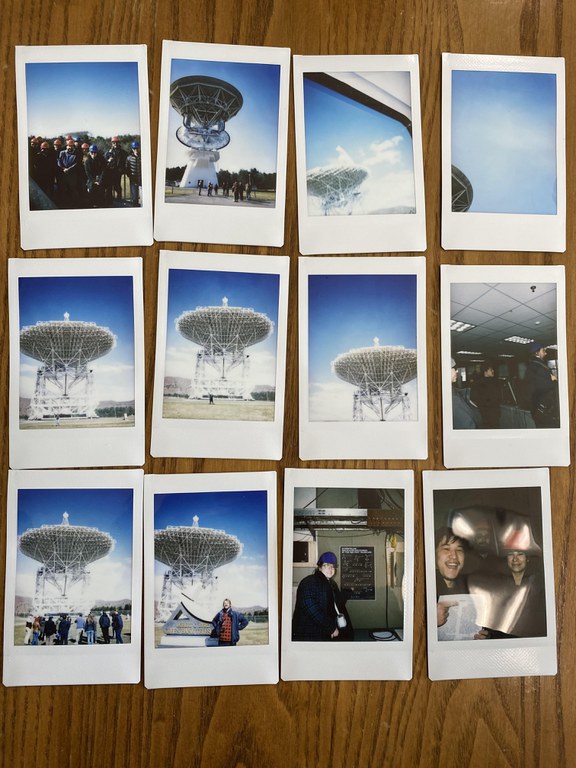
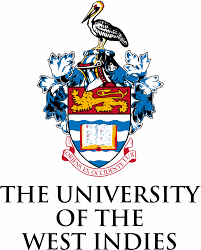
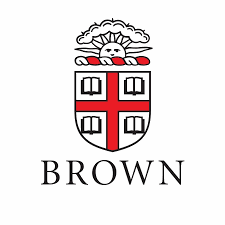

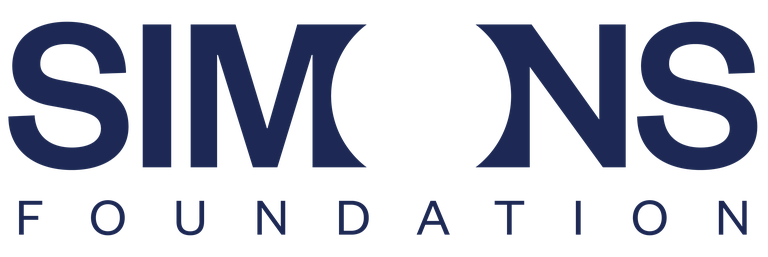

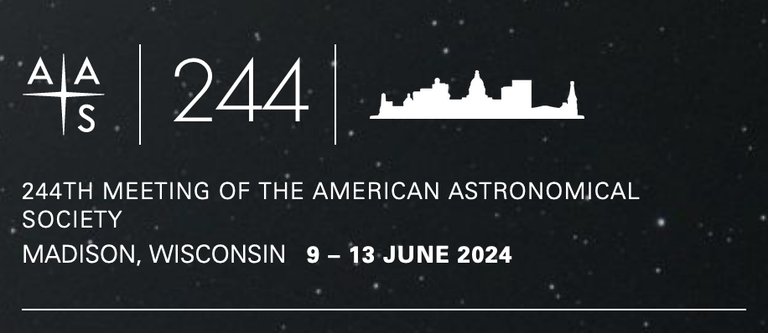

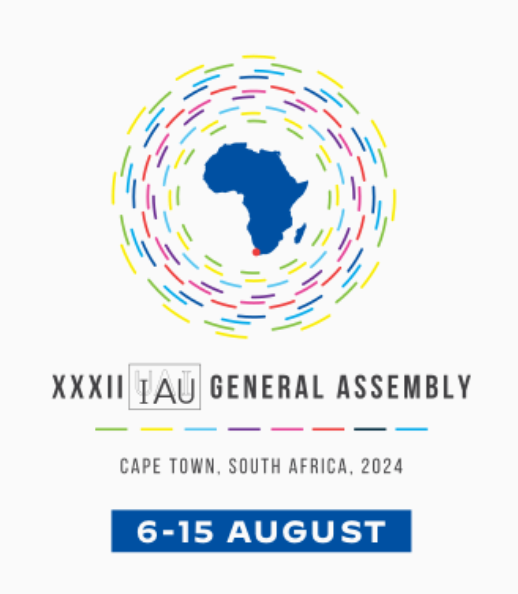
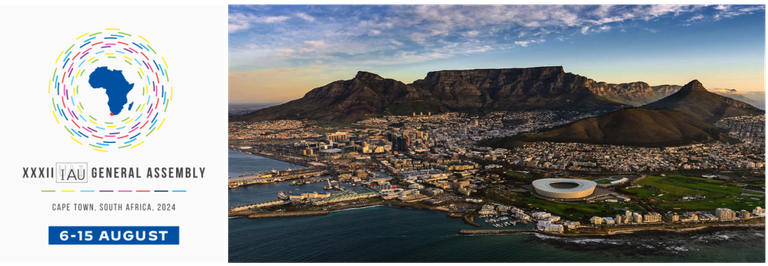
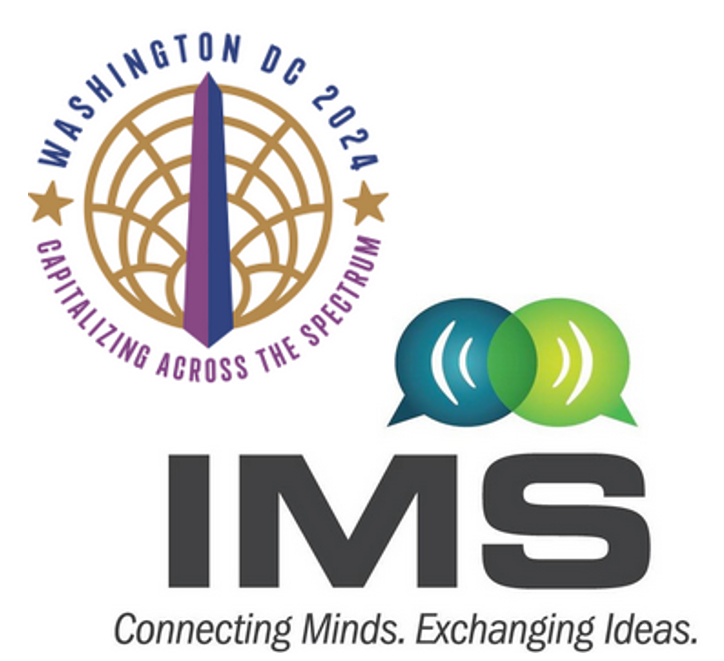




Connect with NRAO